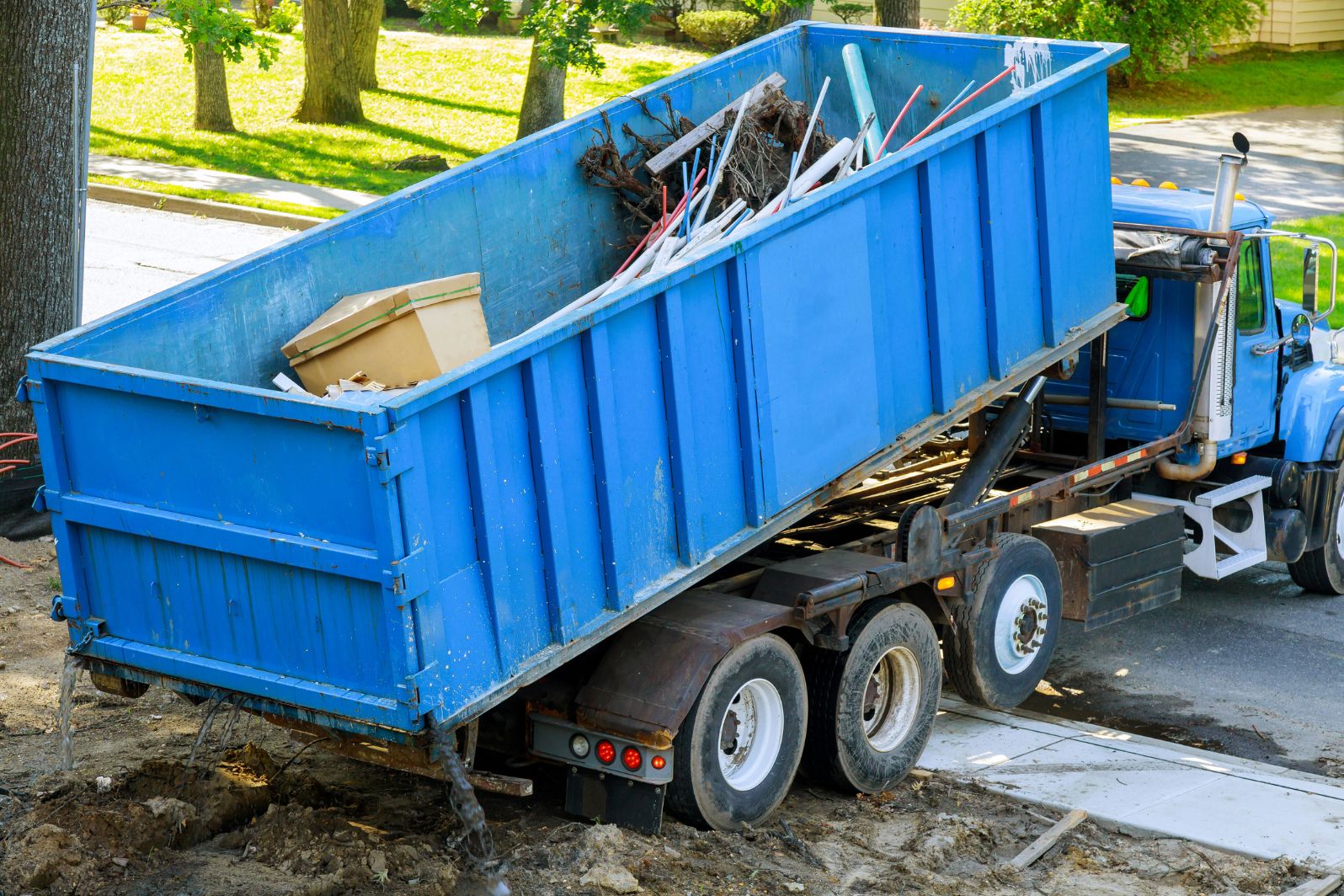Here’s how it usually goes.You fill the dumpster. You nod proudly. You pour a celebratory drink.
Then the pickup truck shows up, stops halfway up the driveway… and doesn’t take it.
Why? Overweight. Overfilled. Or—worse—loaded completely wrong.
When it comes to Kansas City dumpster rental, what you toss in and how you toss it in can be the difference between a smooth cleanup and a surcharge-laden mess.
If you’re renting a dumpster for the first time—or the third time but still winging it—consider this your crash course in dumpster etiquette, efficiency, and avoiding those pesky weight penalties.
Table of Contents
Don’t Just Load—Load With Intention
Let’s get this out of the way: dumpsters are not black holes.
You can’t just hurl debris into them and hope for the best.
(Okay, you can—but it’ll cost you.)
Instead, think like a Tetris master.
Start with heavy items first:
- Broken furniture
- Lumber
- Cabinets
- Renovation waste like tile, drywall, or flooring
Put these on the bottom. They form a sturdy base and distribute weight evenly, which matters when the truck lifts it later. Stack lighter materials (cardboard, insulation, small junk) on top. Don’t create a leaning tower of plywood. That’s asking for a tipping hazard.
Respect the Fill Line—It’s Not a Suggestion
Every Kansas City dumpster rental comes with a fill line. Cross it, and you’re not just being rebellious—you’re creating a real safety issue.
Overfilled dumpsters:
- Can’t be tarped or transported legally
- Are more likely to spill in transit
- Might sit in your driveway until you fix it
Translation? You’re paying for extra time, potential reloading, or even fines. So keep it neat. Stay below the rim. If you’re just barely over—take something out. The driver won’t risk it.
Know Your Weight Limits (Yes, They’re Real)
Here’s the tricky part: a half-full dumpster can still be overweight.
Most Kansas City dumpster rentals come with a built-in tonnage cap—usually 1 to 4 tons depending on the size. Go over, and you’ll pay per extra ton. That can run $75–$100+ depending on your provider and location.
What weighs a lot more than it looks?
- Shingles (up to 250 pounds per square)
- Concrete, brick, and dirt (a cubic yard can weigh a ton)
- Wet carpet or soaked drywall
- Roofing debris and broken tile
When in doubt, ask for the weight cap up front. And don’t mix heavy materials into general debris bins unless it’s allowed.
Don’t Toss These (Unless You Like Paying More)
Not everything belongs in your dumpster—even if it technically fits.
Most Kansas City dumpster rental services prohibit certain items due to environmental regulations and disposal restrictions.
Typical no-go items:
- Paints, solvents, or chemicals
- Tires or batteries
- Refrigerators or anything with Freon
- Electronics or appliances
- Mattresses (check local rules—some allow with fees)
Sneaking in banned materials isn’t just bad manners—it often means the entire load gets rejected at the landfill. Then it’s back to square one. Don’t be that guy.
Separate Materials When You Can
Want bonus points (and maybe lower disposal fees)? Sort your materials.
Some dumpster providers offer:
- Construction debris only bins (cleaner load = easier disposal)
- Yard waste bins (often cheaper)
- Mixed-use bins (most common, but pricier due to sorting)
If your project allows it, keeping materials separated can reduce weight and simplify processing on the backend.
Think About Placement—And Then Think Again
Before the dumpster even arrives, plan for:
- A flat, hard surface (like a driveway—not the lawn)
- Easy access for loading
- Space for the delivery truck to maneuver in and out
Pro tip: put down plywood under the dumpster to protect your driveway. And keep the surrounding area clear—especially of low-hanging branches or parked cars.
Nothing derails a project like having to reschedule delivery because of a power line or narrow alley.
Final Thought: The Dumpster Is a Tool—Use It Smart
A dumpster is meant to make your life easier.
To clear the chaos. To tidy the teardown.
But misuse it—and it can quietly become the most expensive part of your project.
The best strategy? Be intentional:
- Know what you’re throwing out
- Stack and load with purpose
- Respect the weight limits
- And don’t treat it like a landfill for stuff you didn’t want to deal with properly
Planning a big cleanout or renovation? Start with the right loading habits and keep your costs (and stress) under control.
Because filling a dumpster shouldn’t feel like navigating a minefield. Trash smarter.


